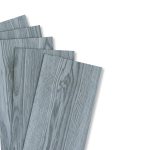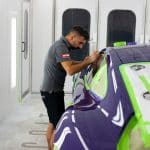In our quest for a quieter, smoother driving experience, one key aspect often eludes us – the aerodynamics of our cars. The shape and design of your vehicle play a significant role in how it interacts with the surrounding air. When you’re cruising down the highway at high speeds and you struggle to hear your favorite song over the wind noise, it’s time to give some serious thought to your car’s aerodynamic profile.
Understanding Vehicle Aerodynamics
Before you begin tinkering with your car’s design, it’s crucial to first understand what vehicle aerodynamics entails. The term refers to how the shape and features of your vehicle interact with the air as it moves. This interaction can create drag, a force that acts in the opposite direction to your vehicle’s motion.
A lire en complément : What’s the Impact of High-Tech Coatings on Windshield Visibility and Durability?
Drag is particularly noticeable at high speeds, where it can greatly impact fuel efficiency and generate wind noise. The latter is often heard in the form of whistling or whooshing sounds, especially near the windows and mirrors.
A significant amount of drag is often created by the side mirrors, or Outside Rear-View Mirrors (OSRVMs). These protruding parts can stir up turbulent air vortices, leading to increased noise and pressure. By understanding the flow of air around your vehicle, you can make adjustments to minimize these effects.
Cela peut vous intéresser : How to Choose and Install the Right Dashcam to Capture High-Quality Nighttime Footage?
Optimizing Your OSRVMs
As one of the main culprits of wind noise, the OSRVMs are a logical starting point for optimizing your vehicle’s aerodynamics. Fig.1 demonstrates the wind flow around a typical car and clearly illustrates the vortex created by the side mirrors.
To reduce this vortex, you may want to consider replacing your current mirrors with more aerodynamically efficient models. There are sleek, streamlined mirrors on the market that are designed to smoothly guide the air around them, reducing the turbulence and associated noise.
Moreover, some newer vehicle models come with retractable OSRVMs. These mirrors can be pulled close to the vehicle body when not in use, reducing the side profile and the amount of drag.
Adjusting the Rear of Your Vehicle
The rear end of your vehicle also plays a significant role in its overall aerodynamics. As wind flows over and around your car, it can swirl into a vortex at the rear. This vortex creates a low-pressure area that can pull your vehicle backward, increasing drag and wind noise.
Adding a rear spoiler or diffuser can help guide the flow of air and reduce the size of this vortex. As the name suggests, a spoiler ‘spoils’ the smooth flow of air over the vehicle’s surface, reducing the vortex and thus, the drag.
A diffuser, on the other hand, works by increasing the velocity of the air under the car, reducing pressure and helping to eliminate the vortex. These additions can significantly improve your vehicle’s aerodynamics, making your high-speed drives quieter and more enjoyable.
Considering a Complete Vehicle Model Change
If you’re serious about reducing wind noise and improving aerodynamics, you might want to consider switching to a more aerodynamically efficient model. Car manufacturers have been paying increasing attention to the aerodynamic design of their vehicles, understanding that a sleek, efficient shape can improve fuel efficiency, performance, and driving comfort.
Cars with a lower, rounded front and a tapered rear end often fare better in terms of aerodynamics, as this shape allows the air to flow smoothly over the surface, reducing drag and noise.
Implementing Acoustic Treatments
Apart from making physical changes to your vehicle, you can also consider implementing acoustic treatments to further reduce wind noise. Noise-canceling materials can be applied to the interior of your car, especially around the windows and doors, to absorb some of the intrusive sounds.
Soundproofing your vehicle can make a significant difference in the noise level, and when combined with the aforementioned aerodynamic optimizations, can provide you with a serene and peaceful driving experience, even at high speeds.
While vehicle aerodynamics might seem like a complex topic, understanding the basics can help you make informed decisions about modifying and selecting your car. By optimizing your vehicle’s aerodynamic profile, you can enjoy a quieter, smoother, and more fuel-efficient ride.
Using Technologies for Aerodynamic Analysis
With a clearer understanding of your vehicle’s aerodynamics, the next step to consider is employing technologies that can help analyze and optimize your car’s flow field. This includes techniques like Computational Fluid Dynamics (CFD) analysis and wind tunnel testing, which can be instrumental in understanding the aerodynamic behavior of your car and identifying areas for improvement.
Computational Fluid Dynamics (CFD) analysis, as referenced in various Google Scholar articles, is a tool that uses numerical algorithms to solve and analyze problems involving fluid flows. In automotive aerodynamics, CFD analysis can help visualize the flow field around your vehicle and identify areas of high drag and turbulent flow that could be causing wind noise.
On the other hand, wind tunnel testing is a more physical approach to understanding aerodynamics. In a wind tunnel, air is blown over a scale model of your car, and sensors measure the resulting aerodynamic forces. Wind tunnels can provide a visual representation of how the air flows around your vehicle, including revealing pressure fluctuations that may contribute to noise.
These technologies can help you understand the aerodynamics of your car in detail, enabling you to make more informed decisions about possible modifications or replacements.
The Role of Your Vehicle’s Mirrors and Windows
The side view and rear view mirrors, as well as the windows of your car, contribute significantly to aerodynamic noise. As air rushes past the mirror housing, it can generate turbulent flow and consequent noise. This noise can be especially prominent at the side window, where sound pressure levels are often high.
One potential solution to reduce this noise is to adjust the position or shape of the mirrors. As mentioned earlier, sleeker and more streamlined mirrors can reduce the drag coefficient, resulting in less turbulence and noise. Some modern vehicles even come with retractable mirrors that minimize the side profile when not in use, further reducing aerodynamic drag and noise.
The windows of your car can also contribute to aerodynamic noise, particularly if they are open. However, even when closed, pressure level fluctuations can cause the window to vibrate, generating noise. Applying acoustic treatments to the windows, such as noise-canceling film, can help absorb some of this noise and create a quieter driving environment.
Conclusion
Optimizing your vehicle’s aerodynamic profile is not just about enhancing fuel efficiency or performance; it’s also about creating a quieter, more comfortable driving experience. From understanding the basics of automotive aerodynamics to making precise adjustments to your car’s design, every step you take can impact the amount of wind noise you experience at high speeds.
Whether you’re considering changing the design of your mirrors, adding a rear spoiler, or even switching to a more aerodynamically efficient vehicle, these changes can greatly reduce the drag force acting on your vehicle and thus decrease the aerodynamic noise. By combining these physical modifications with acoustic treatments, you can further protect your car from intrusive wind noise.
Remember, the ultimate goal is to create a smoother, quieter, and more peaceful journey for you and your passengers. So, while the world of aerodynamics may seem daunting at first, with careful analysis and informed decisions, you can truly transform your high-speed driving experience.






